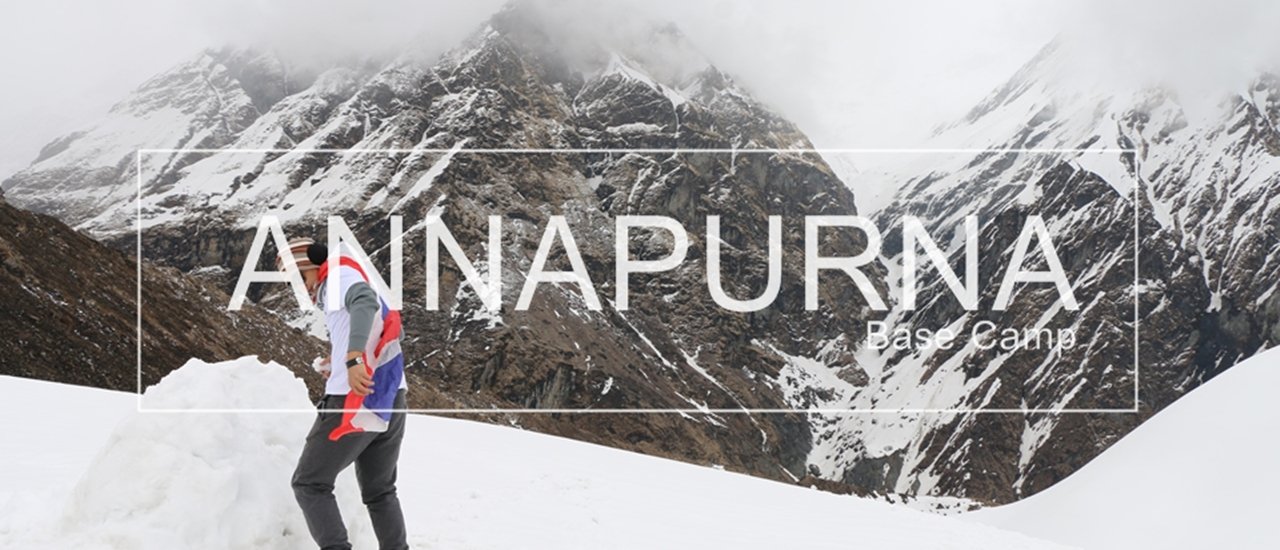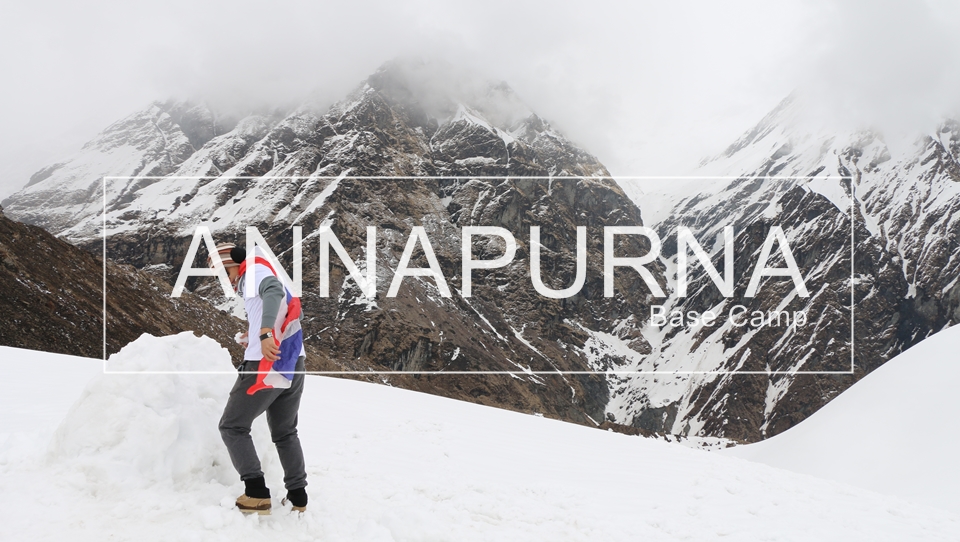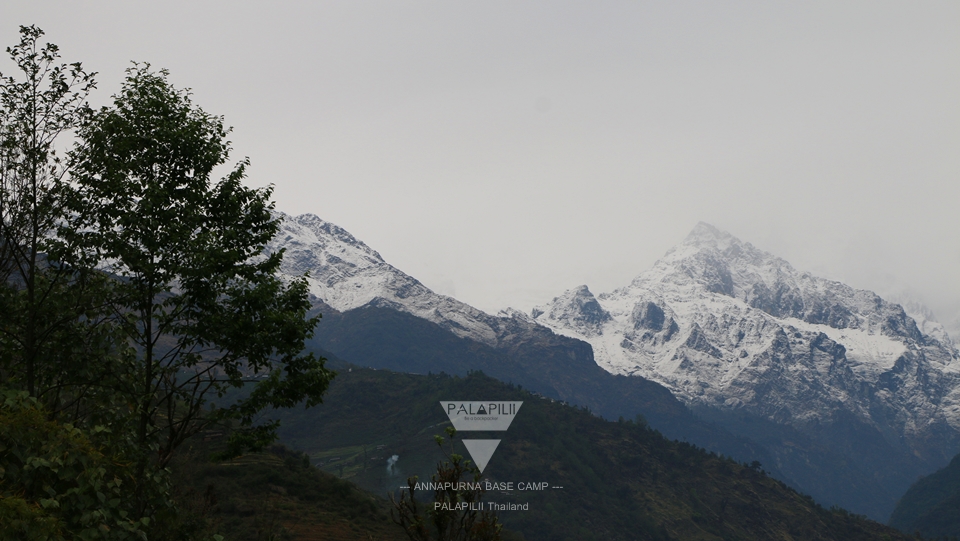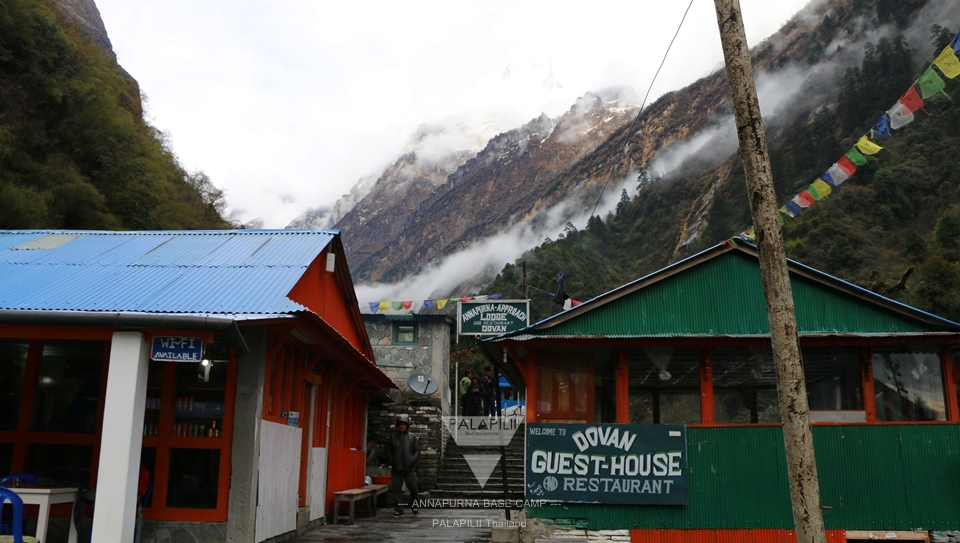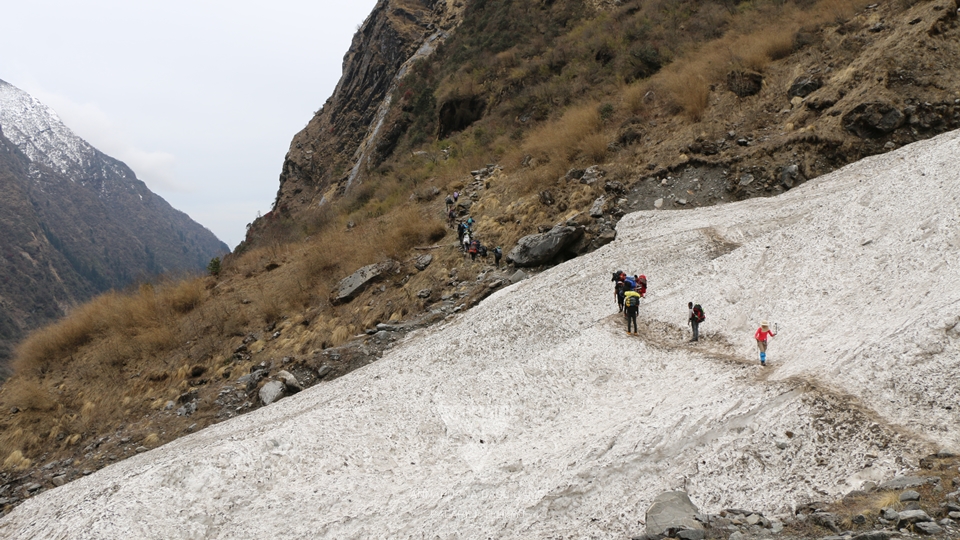
If we talk about the enchanted land, the land that many people want to try trekking experience once in their life, it is impossible to avoid Nepal, a country with more than 70% of its land area covered by mountains. Yes, today I will talk about the paradise on earth, the destination that travelers all over the world aim for, the place that proves the challenge, the place that proves the friendship along the way, this place is Annapurna Base Camp.


Hello, my name is Mai Phuwanat Thanat from the PALAPILII Thailand page, a small page with content about budget travel, travel like going to die with a sword in front, or another way to call it a travel club that averages. I started to love traveling since I returned from the Work and Travel program in the United States. After seeing the world, seeing new things, the environment in front of me at that time changed my attitude to be a different person. I started traveling in Thailand on weekends every week and told myself that I would collect tourist attractions in Thailand as much as possible before graduating...

The first time I heard the word ABC, I didn't pay any attention to it. In my life, I only knew Everest and a few other mountains in Thailand. Since I'm not a trekking enthusiast or a tourist who follows the trends of this world, I didn't really know anything about what they were sharing. In my mind, I thought, "What the hell is ABC? Haha." Then one day, on my Facebook news feed, a post about ABC Trekking popped up. Okay, let's click in and see what it is…
Wow, this is definitely heaven! The ABC that I've been hearing about for months is actually called Annapurna Base Camp. It's a mountain in Pokhara, Nepal. It's like a dream picture that people in my neighborhood often put on their walls or make into wallpaper. I can't believe this place actually exists in the world! I'm so excited to see the picture in front of me. It's a picture of an ice mountain with light shining from the sky. It shows a man walking on the snow, amidst a white background. I can't just sit here, I have to go there! Haha!
I started researching information about trekking ABC to see how we should prepare to climb to the base camp of this mountain, what we need to bring, whether we need permission, how to get there, and what the budget is. I also looked for a travel companion to join me on this big trip.


We have gathered a group of 6 people and divided the task of finding important information about this trip. For our trekking trip to the Annapurna Valley, we will need to fly to Kathmandu, Nepal, which takes about 6 hours from Thailand. From there, we can continue by road or fly over the mountains to Pokhara. The travel time from Kathmandu to Pokhara is about 2 hours by plane, but by car it takes about 6-8 hours, depending on the traffic conditions at that time. The route is quite dangerous, with many curves due to the mountainous terrain and the roads are not very well-maintained. There are villages all along the way. For travel by car, we can hire a car for around 200-300 US dollars. In addition to flying and hiring a car, there is also public transportation available, but it takes more than 12-15 hours to reach Pokhara. It's cheap, but if you can handle it, go ahead.

Upon arriving in Pokhara, it feels like stepping into another world. Pokhara is much more pleasant than Kathmandu, as it is located further north in the country and enjoys a much better climate. This city serves as a sort of staging ground for trekkers, offering a plethora of trekking gear, including warm clothing, boots, gloves, backpacks, sleeping bags, and trekking poles. You can either purchase or rent trekking equipment here. Pokhara is also where you need to obtain a permit to trek the Annapurna Circuit. The permit costs US$20 per person and requires a passport-sized photo and a photocopy of your passport. You can arrange for the permit through an agency before arriving, but this may cost you US$40. I opted to do it myself and paid only US$20 per person. Don't forget to exchange currency for your trip to Nepal, as the local currency is the Nepalese rupee. It's best to exchange your money in Thailand before arriving, as the exchange rate here is less favorable. However, you can also use US dollars in place of rupees, depending on the situation.
With everything ready, the journey begins. We will have to take a bus from Pokhara to the starting point of the trek. There are several starting points, but this time, we will start from Nayabul village. I must say that along the Annapurna Base Camp trail, there are villages located every 1-2 hours apart. The terrain consists of mountains and steep paths, with some dangerous sections due to deep ravines. Combined with unpredictable weather, travelers must be well-prepared with both equipment and physical fitness to adapt to the changing conditions throughout the journey. Alright, I think everyone is ready to embark on this adventure together. Let's put on our backpacks and start walking!


It takes about 2 hours from Pokhara to Nayabul. We unloaded our belongings from the car, checked them, and put our backpacks on. Well, it's about to begin. We all spread out the map and talked again. We discussed which village we would reach each day and what kind of transportation we could use for each section. It might be a horse or a JEEP that the locals have for rent, but it's not always available for every part of the journey. The two options we mentioned are only available for the first part of the trek. From Nayabul, the first place we will go to is Siwai village. We asked the locals and found out that we can rent a JEEP to shorten the travel time. We were able to bargain for 2,500 rupees and it takes about 1 hour depending on the traffic conditions. I have to mention that the road conditions are quite bad. There is no asphalt or concrete, it's just dirt mixed with gravel. On days when it rains, it's a mess. We loaded our belongings onto another car, this time a JEEP, and drove into Nayabul town and then out to the real starting point of our journey, the iron bridge with prayer flags hanging all over it. The bridge connects the village to the starting point of the trek. There is a checkpoint there where officials check the tourists who are going to pass through that road. Anyone who wants to pass must have a Permission Card. After we showed our documents, the 4 wheels of the JEEP started to roll again. The atmosphere in the first part was not that exciting. There were mountains, villagers, and travelers who were not walking up the mountain on the road. And finally, the real thing arrived. We arrived at Siwai village. We will start our trek from here...
The journey to Annapurna Base Camp usually takes 8 days. However, this time, due to our limited time, we had to take time off from work, so we planned to complete the journey in just 6 days, with 4 days for the ascent and 2 days for the descent. For this trip, we will not be discussing the route to Poon Hill. We will be taking the direct route to Annapurna Base Camp. The total round-trip distance is 80 kilometers, and the highest point we will reach is the prayer flag area at Annapurna Base Camp, which is 4,130 meters above sea level.


Day 1: Siwai Village - Jhinnukanda Village
The first part of the journey was filled with joy and excitement. The mountain views were much grander than those back home, and the landscape was breathtaking. The atmosphere was pleasant, and we chatted as we walked. Along the way, we saw goats and sheep that the villagers had raised and left to graze in the meadows below. A river ran alongside the entire path, and we could see villagers tending to their farms. In some sections, stone steps were built for the convenience of tourists. On the first day, we climbed approximately 2,000 steps. This section was densely populated, allowing us to observe the lives of the villagers and their way of life. It also served as a warm-up for the rest of the journey.

Day two: Jhinnukanda Village - Dovan Village
The landscape is starting to become a fern forest. The path is very steep when leaving Jhinnukanda, it's quite tiring. Then it will alternate between going up and down all the way. The forest will gradually become denser, with small waterfalls along the way. There are about 3 bridges crossing the river, which comes from the Annapurna mountain range. It is formed from rainwater and snowmelt, which is sent to the city of Nepal for the villagers to use in their daily lives. And during this time, travelers will start to see rhododendrons along the way. This is considered the steepest part of the journey.

Day 3: Dovan Village - Machhapuchere Base Camp (MBC)
At the beginning of this section, we cross a bridge and leave behind the humid rainforest atmosphere. Soon, everything starts to turn yellow. The lush green forests on the mountains begin to dry out and turn a yellowish-white color. This is due to the trees losing water to survive as the temperature drops and the air pressure decreases. At an altitude of over 2,500 meters above sea level, altitude sickness can occur, causing symptoms such as dizziness, headache, fatigue, and nausea. Along the route today, the maximum point of exertion is at Fishtail, located at the second bridge of this section. While walking, don't just look ahead. Look around and behind you, and you'll realize the true meaning of breathtaking beauty. The yellow landscape will be gradually covered by white snow as we reach the end of the day. At the resting point for the third night, we will have a close-up view of the Machhapuchere Base Camp (MBC). And tonight, we will sleep in sub-zero temperatures amidst the snowy mountains.

Day 4: Machhapuchere Base Camp (MBC) - Annapurna Base Camp
Today, we have to wake up early at 5:00 AM to walk up to Base Camp. The reason is that if we go later than this, the sun will be very strong and when it hits the snow, it will make us dizzy or blurry. Everyone should bring sunglasses. Another reason is that we have to hurry down because the weather up there is quite cold. During the walk, there will be only white snow along the way. It's not very far, but you will get tired quickly because of the low air pressure. Everyone who goes on the Annapurna Base Camp route must bring headache medicine and medicine for altitude sickness. But I assure you that the pictures you will see are truly worth it.


The main four days of this trip are spent on this heavenly path. After that, we walk back down the same path as usual. The food we eat on the mountain is mostly the same. Sometimes it's cassava soup, sometimes it's stir-fried vegetables, sometimes it's local food. Most of it is like this. The taste is bland, and most places offer fresh milk, hot milk, and milk tea to drink. You have to buy bottled water. You have to buy everything. There's nothing free up there. Food costs about 200 baht per meal if you convert it to Thai baht. But it depends on your lifestyle. But if I have to recommend something about the food, don't forget to bring fish sauce and chili powder. Your life will be much better. Haha.

From my travel experience that time, I can summarize the trip roughly as follows:
- You don't need to hire a guide, because the path we take only requires a Permission slip, and you can easily reach the camp or villages along the way. Moreover, the path is clearly marked and there is only one path. However, if you want peace of mind, a guide will cost around 20 US dollars per day.
- Regardless of which airline you arrive in Nepal, our next destination is Pokhara. I recommend two ways: flying, which is a bit expensive but saves time, or taking a private car, which is cheaper and suitable for those who have plenty of time. But we will also be able to see the scenery along the way from Nepal to Pokhara. It can be said that there are different advantages and disadvantages.
- For trekking equipment for occasional hikers or groups of travelers who do not go hiking regularly, it is recommended to rent in Pokhara. The prices are affordable, and the quality is high.

For frequent travelers, this route can be completed in 5 days. The main route is as follows:
Day 1: Siwai – Jinnukhanda
Day 2: Jinnukhanda – Dovan
Day 3: Dovan – MBC
Day 4: MBC – ABC and then down to Dovan
Day 5: Long drive from Dovan to Siwai, the starting point for the trek.
How are you all doing? This trip to the heavenly path on earth is interesting enough to make you want to pack your bags and carry them on your back to fly to Nepal, right? But for me, that trip to heaven on earth is still unforgettable to this day. See you along the way.
Mi Palapilii
Friday, September 27, 2024 9:54 AM

